Porsche 911 (G-Series) – The Story
The Second Generation 911
The Story / Timeline / Details / Model Guides / Performance & Specs / Data & Research / Pictures & Videos / News & Updates
The Porsche 911 G model was a true perennial and was built for a full 17 years. During this time, engines were built with 2.7, 3.0 and 3.2 liters. The narrow G-model (from 1974 to 1977) over the 911 SC, the Carrera 3.0 to the Carrera 3.2 gave it a large variety of variants, colors and equipment. The G-Body saw the introduction of impact bumpers to conform with low speed protection requirements of U.S. law, these bumpers being so successfully integrated into the design that they remained unchanged for 15 years. In 1974 the engine size was increased to 2,687 cc, giving an increase in torque. The use of K-Jetronic CIS Bosch fuel injection in two of the three models in the line up - the 911 and 911S models, retaining the narrow rear wings of the old 2.4, now had a detuned version of the RS engine producing 150 and 175 bhp (110 and 129 kW) respectively.
Ten years after the car made its premiere, the Porsche engineers gave the 911 a comprehensive makeover. Known as the 'G-model', the new generation 911 was built from 1973 to 1989 – a longer period than any other. A particular feature of this evergreen was the striking bellows-style bumpers – an innovation created in order to comply with the latest US crash test requirements. Three-point safety belts fitted as standard and seats with integrated headrests also provided increased occupant safety. A further milestone in the car's history came in 1974, when Porsche brought out the first 911 Turbo with a three-litre engine, 260 hp and a striking rear spoiler. With its unique combination of luxury and performance the 'Turbo' became a synonym for the Porsche brand. In 1977 came the next performance level: the 911 Turbo 3.3 was given a charge air cooler and at 300 hp was the highest performance car of its class. On the naturally aspirated side the 911 Carrera re placed the SC in 1983 and, having an engine capacity of 3.2 litres and 231 hp, became a much loved collector's piece. Lovers of fresh air were able to buy this 911 as a convertible from 1982. In launching the 911 Carrera Speedster in 1989, Porsche was building on a legend.
Engineers searching for the "ideal charge" – optimum combustion of the air-fuel mixture – is almost as old as the combustion engine itself. The technicians aim to get as much air as possible into the cylinders so that, when it is compressed and mixed with fuel, it can create a high operating pressure and therefore high output by means of combustion. The 911 Turbo, presented in 1973, was a forward-looking study as its 3-litre turbo engine boasted charge pressure control on the exhaust side which had previously been thoroughly tested in the motor racing sector. With the 911 Turbo, which was ready for series production in 1974, Porsche was the first car manufacturer to successfully adapt the turbocharger to the various driving states. Instead of the conventional intake-side control, the company developed exhaust-side charge pressure control. This prevented unwanted excess pressure during partial load or overrun by guiding excess exhaust gases via a bypass instead of through the exhaust gas turbine. When charge pressure was needed again during an acceleration phase, the bypass valve closed and the turbine could work to its full capacity in the exhaust stream.
In 1975, Porsche responded to the issue of corrosion with emphatic success. The 911 was the first series production car to be given a body which was galvanized on both sides – allowing Porsche to offer a six-year corrosion warranty which was extended to seven years for the 1981 model year and then later to as much as ten years. The treated body-in-white not only improved the service life but also vehicle safety as the process preserved the overall rigidity and the crash safety characteristics of the body, despite vehicle aging. It plays a part in the reputation of the 911 as being an extremely durable vehicle – two thirds of all the 911 cars ever built are still licensed for road use today. Extensive tests were carried out before the body was launched for series production. This included trials with stainless steel as the body material – three shiny silver prototypes were made from this material, one of which can be seen today at the Deutsches Museum in Munich. However, the engineers decided not to use stainless steel but to galvanize the body-in-white as this was easier to produce. Driving the prototypes through a bath of salty water to test the resistance to corrosion is a legendary part of the test course in Weissach.
Generation: Second Generation / Manufacturer: Porsche AG / Production Years: 1974 - 1989 / Model Years: 1974 - 1989 / Designer: Ferdinand Alexander Porsche, Erwin Komenda / Body Style: 2-door coupe, 2-door targa, 2-door convertible, 2-door speedster / Layout: Rear-engine, rear-wheel drive / Engines: 2.7 L Flat 6 (various), 3.0 L Flat 6 (various), 3.2 L Flat 6 (various), 3.0 L Flat 6 (various), 3.0 L Turbocharged Flat 6, 3.0 L Turbocharged Flat 6 / Transmission: 5-speed manual, 4-speed automatic / Date of unveil by Porsche AG: official photos in March 1996 (Geneva Motor Show) / Premiere: Premiere: September 12, 1973 IAA Frankfurt / Predecessor: Porsche 911 Classic (F-Body) / Successor: Porsche 911 (Type 964)
This graphic breaks out the second generation Porsche 911 in terms of timelines and how to tell all the models apart. Click on the image to see it in higher definition. Note that the second generation 911 had several iterations and models variants so its a bit of a confusing chart.
In the 911’s first nine years of production, nearly 83,000 were sold. Between 1964 and 1973, the first generation F-body 911 had been considerably improved. Over those years, engine size grew from 2.0 to 2.4-litres. By the early 1970s, complying with tightening US safety and emission legislation was becoming a problem for Porsche, which is why Porsche created the new G-body platform. The 1974 model year G-series derivative replaced the outgoing 1973 model year F-series.
The new 911 looked different to the outgoing generation and also included new engines and variants. The new impact-absorbing bumpers, a response to regulations meant that the 911s now has a colored bumper and a new front profile. The entry level 911 had 150 bhp, the 911 S got 175bhp and the top of the line Carrera got 210 bhp. All models were available as Coupe or Targa.
The body and suspension were little changed from the outgoing generation. The engine upgrades were pretty special and took a lot of learning from the 1973 RS and were available in three states of tune depending on the variant chosen.
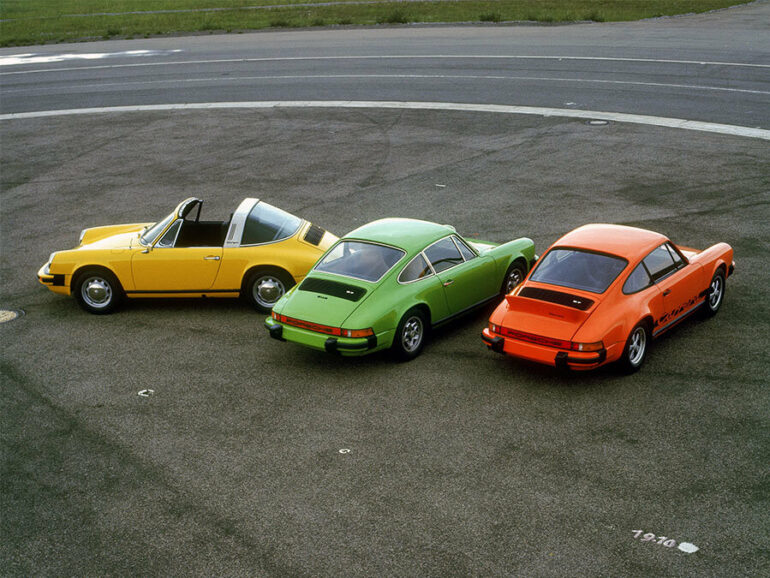
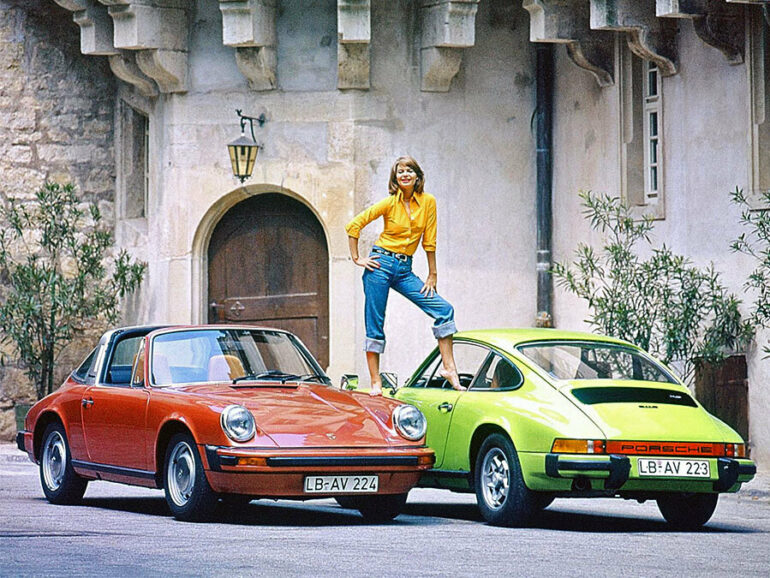
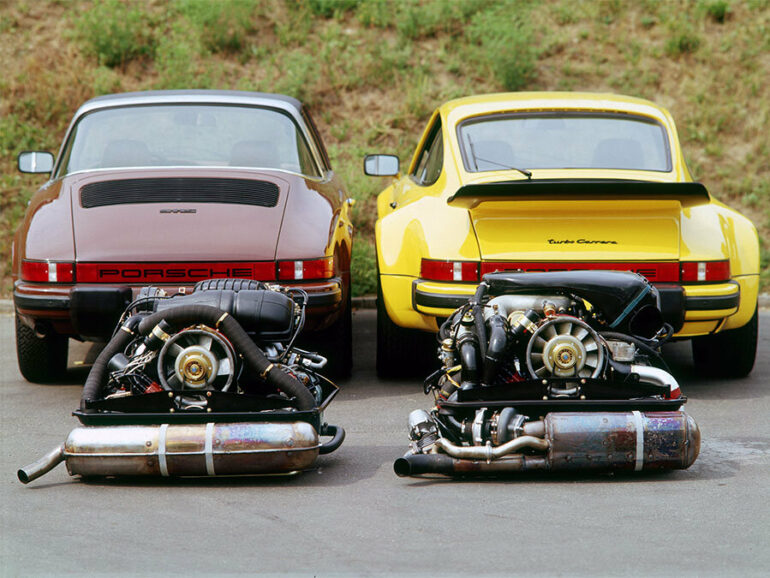
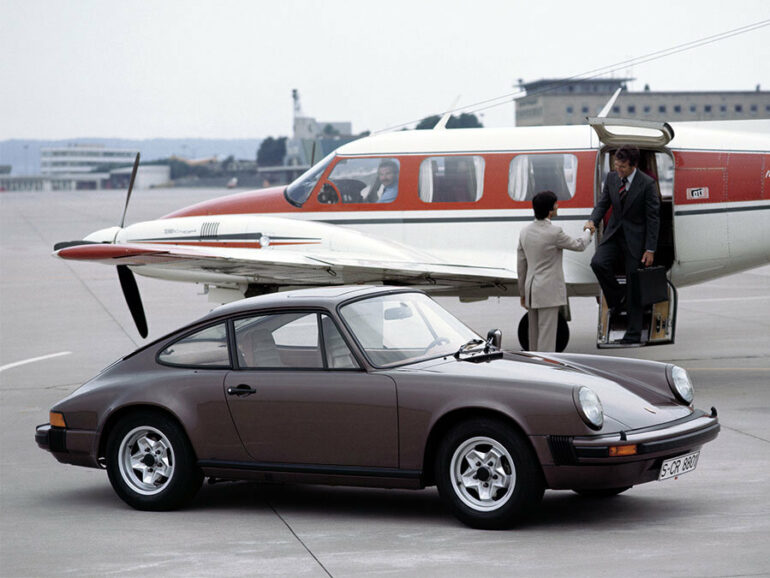
Porsche struggled to make all the 911s available in the US even though it got better at making its engines cleaner and more efficient. The top of the line Carrera couldn't be sold in the U.S and the lower models had to make do with lower power thanks to a power-stealing power-steering system. For the 1974 and 1975 model years, Porsche had offered the entry level 911, the mid-range 911 S and the flagship 911 Carrera. All came with 2.7-litre engines. Production of the 1976 model year meant the 911 model lineup was now only two versions (the 2.7-litre 911 Lux (known as the 911 S in the US) and the 911 3.0 liter 3.0 Carrera).
Improvements to the both the 2.7 and 3.0-litre lumps came in the form of a better cooling fan (five blades) and larger oil pump. The Bosch K-Jetronic fuel-injection with automatic cold start enrichment was also new.
The new 3.0 Carrera replaced the outgoing 2.7-litre Carrera as the top of the lineup (it too wasn't US compliant). The engine was essentially a normally aspirated version of the turbocharged 930 engine and made a respectable 200bhp and 188 ft lbs. A four speed gearbox was standard with a five-speed an option.
The big update when it came to the body was the new zinc coating starting in 1975 and cast front suspension cross-member (as used on the 930). Thicker torsion bars were fitted to the 3.0 Carrera as standard.
1978 saw a new 911 introduced, known as the Porsche 911 SC. Overall, it was meant to be more refined, more driveable, and more dependable, all with the aim of attracting new buyers to the brand. The SC, which stands for "Super Carrera" was destined to be the last of the model 911 line as the all new front-engine mounted V-8 Model 928 was waiting in the wings to take over as the flagship for the 1979 model year. The SC was built around the 1974 Carrera 3.0 Turbo engine except with no turbos and it was also the first Porsche truly designed for the worldwide audience.
The model 911SC offered American buyers an attractive 15 bhp bump over it's predecessor the model 911 S. Porsche sought to make the SC a 'world' car by fitting every model for every market with an exhaust emission air pump. The emissions regulator created a 20bhp loss for the Europeans when the SC replaced their 200bhp model Carrera 2.7. Porsche made compensation for the loss of power by advancing the timing of the camshafts by a mere six degrees, allowing it to pull surprisingly strong from low rpm.
Over its life, the SC got updates almost every year. Power was increased for the 1981 year model, now with 204 hp. In late 1981, a Cabriolet concept car was introduced at the Frankfurt Motor Show. This was the introduction of Porsche's first true convertible. The Cabriolet was made available to the public in late 1982 as a 1983 model and proved to be wildly popular despite a premium price tag, selling out more than a year in advance. There were basically 3 special editions of the model 911SC.
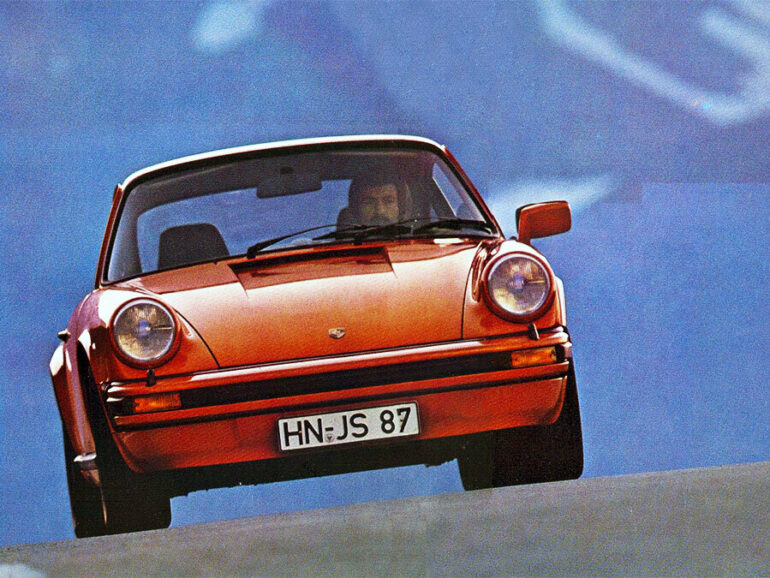
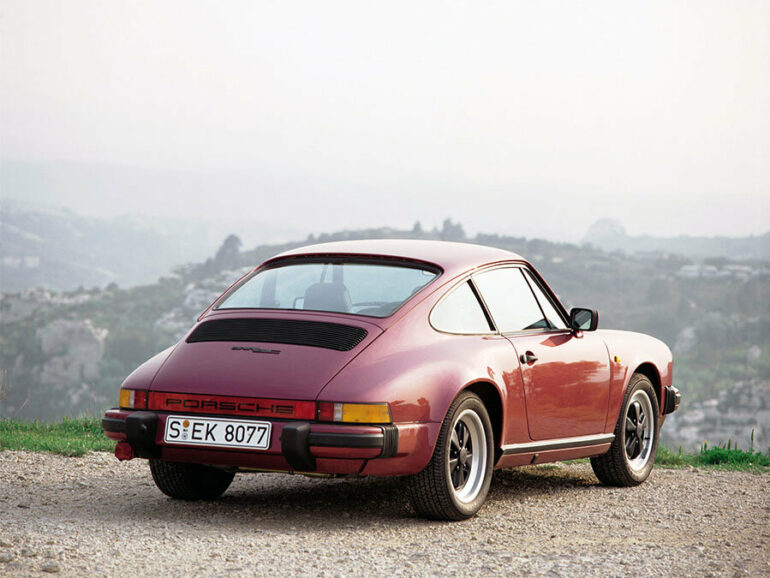
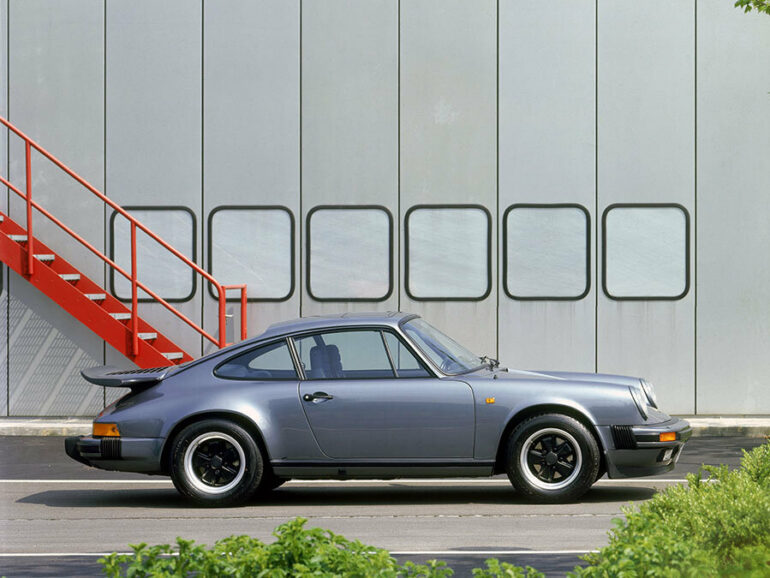
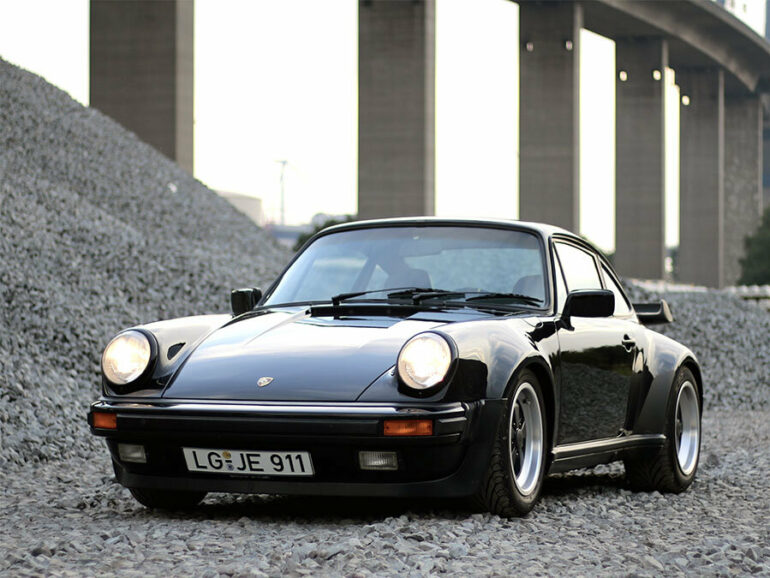
In 1984 Porsche introduced the replacement to the popular 911SC and it got the classic 'Carrera' designation which had not used since 1975. Welcome to the Porsche 911 Carrera. The Carreras were offered in all three 911 body styles: coupe, cabriolet and targa.
With a higher displacement and electronically controlled fuel and ignition, the 3.2 Carrera was both faster and more fuel efficient than the SC. The engine capacity was raised to 3164 cc by employing the 95 mm bore from the previous SC model along with the 74.4 mm stroke of the 1978 Turbo 3.3's crankshaft. Higher domed pistons beefed up the compression ratio to 10.3:1 for cars on the European market, and 9.5:1 in cars destined for the shores of the United States. The American versions were pushing and impressive 207 hp and the European market versions were pushing an even more impressive 231HP. The Carrera's 3.2-liter flat-six boasted nearly 80-percent new parts, although its overall design was the same as the 911SC's. The only transmission offered at launch was the Getrag 915 five-speed manual.
The Model 911 3.2 Carrera remained basically unchanged during it's 5 year production run with the exception of a new 5-speed gearbox, a hydraulically operated clutch and a thermostatically controlled fan to improve oil cooling, all implemented in 1987. There were some minor exterior modifications of fog lights, and a redesigned dash in 1986 that featured larger air conditioning vents. Porsche also produced 4 optional limited production versions, as well as a Speedster body style that would go on to become a favorite amongst fans.
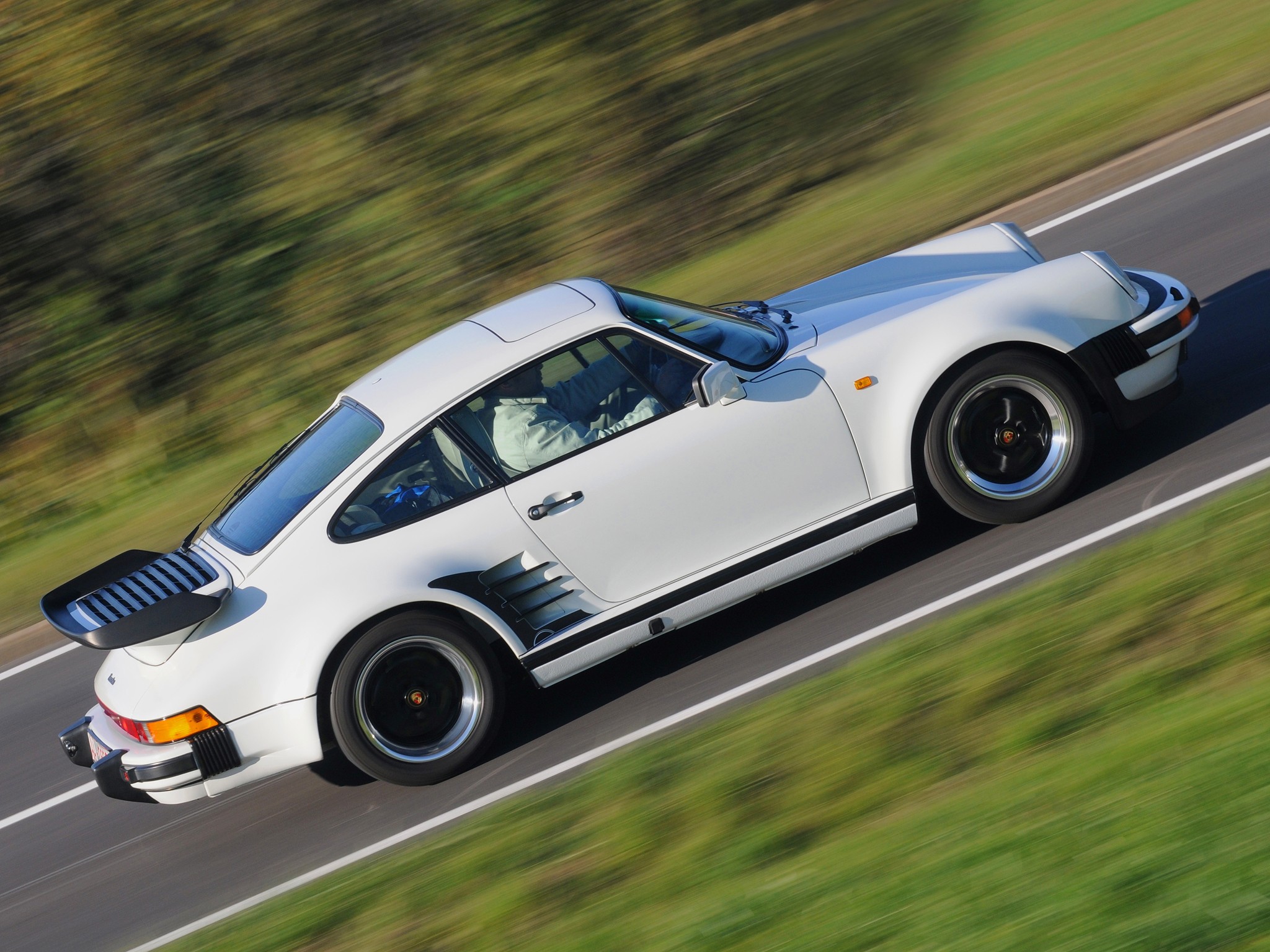
With Groups 4 and 5 in mind, Porsche created their second 911-based homologation special: the turbocharged 930. The development of Porsche's first turbocharged version of the Model 911 began in 1972 and went on sale in Europe for the model year 1975 and marketed simply as the "911 Turbo". The first exports didn't hit the shores of the US until 1976 and were initially badged as "Turbo Carrera" for a short period of time. Soon the designation was changed to Type 930. The original plan for the 911 Turbo was to meet the homologation requirements of 400 units (enough for homologation rules), but in the end the Turbo became a cultural phenomenon, a performance king and huge commercial success.
Porsche adapted the turbo-technology that was initially designed for the 1973 CAN-AM racer Model 917/30 (which churned out a seering 1100 bhp+) to the 3.0L flat six from the 1974 Model Carrera RS 3.0 (which was the base model for the Carrera RSR 3.0 which dominated 6 out of the 8 rounds of the 1974 European GT Championship) creating the 256hp monster that was then internally dubbed the Type 930. In order to handle the higher power output, the Type 930 was given a suspension revision, larger brakes, larger wheels, wider tires and flared fenders to accommodate the extra power. A large rear spoiler was added, known familiarly as a "Whale Tail" or a "Tea Tray", to help create downforce at the rear and push more air through the engine. Lastly, it got a stronger 4-speed gearbox.
As impressive as the stats and performance graphs were for the Type 930, the car proved dangerous and even deadly in the hands of inexperienced drivers. The rear-engine placement was advantageous for traction; however, the severe turbo-lag would create sudden bursts of power during cornering that would break the car loose and cause it to spin out of control. Less experienced drivers would react by quickly releasing the throttle which only amplified the situation - the result was more often than not disastrous. It became known as the widow-maker.
The Type 930 was upgraded its life, most obviously in 1978 when the engine size was increased to 3.3 liters and an intercooler was added which bumped up engine output to 300 hp. The brakes were also upgraded again, and the spoiler was re-designed and raised slightly to accommodate the addition of the intercooler. There were also several special edition Turbo models you could buy, like the "Flachbau" or "slantnose" editions, giving you more power and a different, Porsche 935 look. The last major revision for the Type 930 came in 1989, which was ironically the last year of production for the model. It was finally equipped with a G50 transmission - the 5-speed manual that many feel should have been incorporated into the initial design back in 1975. The Type 930 was officially replaced by the Type 964 in 1990, however it will always have the honor of being the model that began Porsche's Turbocharged legacy.
2nd Gen Porsche 911 Special Models
There were several basic special edition models throughout the second generation 911s lifecycle that were nothing more than design exercises, but there were also some really interesting models too. Following the famous 1973 F-model 911 Carrera RS 2.7, Porsche built its successor based on the G-model and it was called the 911 Carrera RS 3.0. With its new 3.0-liter engine, featuring mechanical fuel injection, it was capable of 230 hp and boy, was it rare, with only 56 made. Then there was the Option M491 which was called the 'Supersport' in the UK, and commonly referred to as the 'Turbo-look'. The M491 option closely resembled the Model 930 Turbo with it's exterior styling that included flared wheel arches and the classic rear spoiler. It also featured wider wheels, a stiffer suspension and the superior turbo braking system. From August 1987 to September 1989 Porsche produced the model 911 Carrera Club Sport, or 911 Carrera CS. A total of 340 of these cars were built and they were built specifically for club racing and included a blueprinted engine with hollow intake valves, a higher rev limit, spartan interiors and zero power options - in an effort to save weight, of course. There was also the Speedster, a 2 seater, low-roof version of the Cabriolet, reminiscent of the model 356 Speedster of the 50's.
2nd Gen Porsche 911 Race & Motorsport Models
This was one hell of an era for Porsche 911 race based cars. For 1974 both the 911 Carrera RSR 3.0 and RSR Turbo 2.1 were created - the 3.0L for the customer teams and the 2.1 turbo for Porsche’s own team. The 911 Carrera Turbo 2.1 was the first turbocharged Porsche 911, and the first turbo-powered Porsche race car at Le Mans. It was fitted with a newly-developed 2,142 cc engine which was good for 500 bhp. The 3.0 RSR was an amazing car to drive and it went on to become one of the most successful Group 4 racing cars ever. The Carrera RSR 3.0 was made in small numbers for racing. For the privateer in the mid-1970s who wanted to go sports car racing, and in particular compete successfully at the famed 24 Hours of Le Mans, there was really only one viable option, the Porsche RSR. Introduced in 1973, the 2.8 RSR was a factory-built racing car based on the 911 chassis. These were not converted street cars, but rather purpose built competition models designed and built from the ground up for serious racing use. The 3.0 RSR had the perfect combination of low weight, immense Porsche 917 brakes, impeccable handling, and a 330+hp naturally aspirated flat-6 that gave the model a mighty power-to-weight ratio. This era also gave us some great Porsche 911 rally cars too, which we have included below.
Porsche 911 (2nd Generation) News & Updates
Recent auctions, awesome review videos and all the latest news and posts regarding anything to do with the second generation, G-bodied Porsche 911.
Join Our Porsche Community
Sign up for our weekly Porsche newsletter. The latest Porsche news, rumors, reviews and more delivered to your inbox. Cool Porsche stuff perfect for the flat-six obsessed.